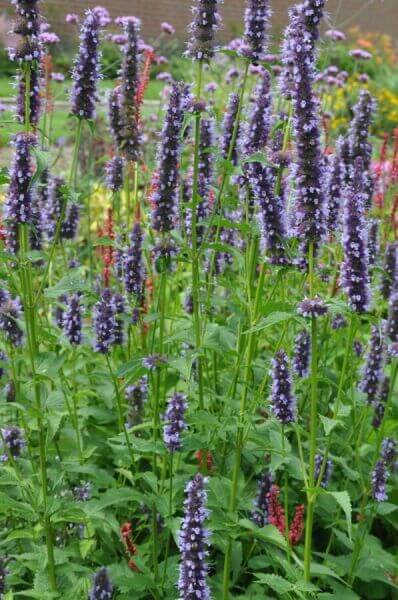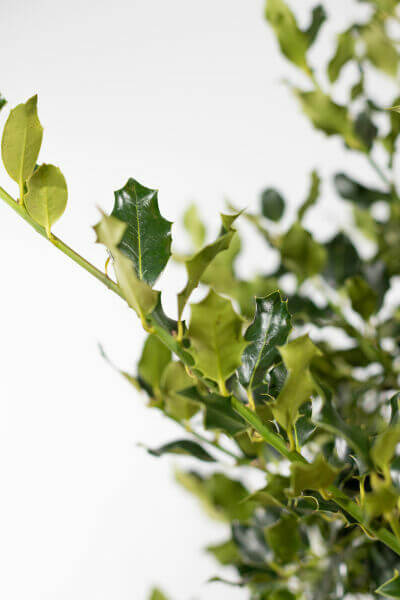Hedge Plants For Winter Berries
Hedge Plants For Winter Berries
Blog Article
Hedge Plants For Partial Shade
Enhance your garden's allure with lavish hedge varieties such as Yew (Taxus), Thuja, Laurel, Photinia, and Bamboo, commemorated for their structural integrity and ecological advantages.
Yew and Thuja provide evergreen protection and winter season durability, while Laurel uses rapid development and broad, fragrant leaves.
Photinia adds seasonal charm with its dynamic red foliage, and Bamboo provides a low-maintenance, serene atmosphere.
These hedges enhance air quality, reduce noise, and develop tranquil, private spaces.
Appropriate planting, spacing, and upkeep ensure vigorous growth and eco-friendly harmony.
Explore how these rich ranges can raise your garden's beauty and well-being.
Key Takeaways
Change Your Garden With Lush Hedge Ranges
- Select Yew for its thick, evergreen growth and unrivaled longevity.
- Select Laurel for its quick development and broad leaves, ensuring quick privacy.
- Select Photinia for its dynamic seasonal foliage, which turns a striking dark red.
- Use Bamboo for a low-maintenance, winter-hardy hedge with visual appeal.
- Area plants 2-3 per meter and prune frequently for optimum development and health.
Popular Hedge Plants
When changing a garden with lavish hedge ranges, it's necessary to consider popular hedge plants such as Yew, Thuja, Laurel, and Photinia due to their unique characteristics and benefits.
Yew (Taxus) is highly esteemed for its durability and thick, green development, making it a prime option for sustaining landscapes.
Thuja is kept in mind for its evergreen foliage and robust winter season durability.
Photinia adds seasonal vibrancy with red leaves that darken in time, creating dynamic visual appeal.
Laurel offers quick development and aromatic, broad leaves, suitable for quick privacy.
Additionally, Bamboo is an excellent option for atmosphere, providing a low-maintenance, winter-hardy choice that enhances the garden's visual with its classy, swaying walking canes.
These selections cater to a variety of horticultural requirements and preferences.
Benefits of Garden Hedges
Garden hedges use a plethora of advantages, making them a valuable addition to any landscape. These natural barriers are cost-effective to carry out and offer significant wind defense, improving air flow and contributing to sound reduction. The thick foliage of hedges like Thuja and Beech guarantees privacy by blocking exposure, creating a tranquil and secluded environment.
Hedges also play an important role in microclimate guideline, providing a steady environment that promotes plant development and decreases temperature level changes. Their complex leaf structures filter toxins, enhancing air quality and adding to a much healthier garden community.
Additionally, hedges master sound decrease, absorbing and deflecting sound waves to lower ambient noise levels. This double performance of supplying both acoustic and visual personal privacy improves the overall serenity and visual appeal of any garden.
Planting and Maintenance Tips
For an effective hedge, careful preparation of the planting area is vital. Ensure the soil has appropriate pH and drain to support strong root development.
Space the plants properly for the picked species. Water the hedge frequently throughout its preliminary development phase, adjusting as needed with seasonal modifications.
Carry out a systematic insect control and illness avoidance method, using organic or chemical treatments when needed. Frequently check for aphids, mites, and fungal infections.
Apply mulch to retain moisture and suppress weeds. Seasonal pruning promotes thick development and air blood circulation, necessary for plant health.
Following these guidelines will help you cultivate a vibrant, well-kept hedge that improves the charm of your garden.
Spacing and Cutting Standards
Spacing and Cutting Standards
Correct spacing and cutting are important for cultivating healthy, visually appealing hedges. Adequate spacing ensures each plant receives sufficient nutrients, light, and airflow.
Follow these guidelines for optimal hedge maintenance:
- Spacing: Position hedge plants 2-3 plants per meter to motivate robust development.
- Pruning Strategies: Routine pruning is vital for preserving preferred hedge height and shape. Trim new growth in summer and cut down older wood throughout winter season.
- Seasonal Care: Adjust trimming schedules and methods according to seasonal requirements to make sure plant health.
- Hedge Height: Frequently screen and trim to maintain the wanted hedge height and accomplish uniform visual appeals.
Abiding by these steps will ensure your hedge grows, boosting both the appeal and functionality of your garden.
Selecting the Right Hedge
Selecting the Right Hedge
Selecting the proper hedge includes evaluating aspects such as fully grown height, foliage density, and environmental strength. Successful hedge plant selection needs understanding each types' growth characteristics and site-specific versatility.
For example, Yew (Taxus) uses outstanding durability and dense development, while Thuja is noteworthy for its winter season durability. Additionally, thinking about upkeep requirements is important; fast-growing types like Laurel or Privet need regular cutting, whereas low-maintenance choices like Bamboo or Ivy may be more suitable for those looking for minimal maintenance.
Environmental elements such as soil type, light accessibility, and moisture conditions ought to likewise guide the choice process. This cautious technique ensures the selected hedges will thrive, offering both visual and functional advantages to the garden landscape.
Delivery and Planting Advice
To ensure your hedge plants grow, they should be delivered by specialized carriers and planted promptly upon arrival.
Follow these important actions for effective planting:
- Soil Preparation: Enrich the soil with organic matter to enhance drain and nutrient material.
- Planting Depth: Create a trench twice the width and equal to the depth of the root ball.
- Watering Methods: Water completely after planting, keeping the soil regularly moist but not saturated.
- Mulching: Apply a layer of mulch to keep moisture and suppress weeds.
Client Assistance and Service
Offered the vital role of timely assistance in horticultural pursuits, our customer support team is offered six days a week through telephone, email, and social networks to provide professional recommendations and promptly resolve any issues. Their devotion to fast action times makes sure consumer satisfaction by dealing with queries associated with plant health, ideal planting methods, and maintenance schedules.

Communication Technique
Within 2 days
This detailed assistance system, enhanced by a stellar 9.3/ 10 customer rating, highlights our commitment to improving the gardening experience for each customer.
Often Asked Concerns
For How Long Does It Consider Hedge Plants to Develop?
Hedge plants normally need one to 3 years to end up being completely established, with the precise duration varying by species and growing conditions.
Effective care during this critical duration is necessary for robust development. Constant watering, watchful weed control, and suitable fertilizer application are pivotal in promoting strong root development.
For instance, fast-growing types like Laurel might establish more quickly, while slower-growing varieties such as Yew may take longer. Thorough maintenance accelerates the facility procedure, leading to dense and healthy hedges.
What Are the Finest Hedge Plants for Personal Privacy?
The question of the best hedge plants for personal privacy includes assessing evergreen and deciduous options.
Evergreen hedges like Thuja, Laurel, and Cypress supply year-round protection, guaranteeing continuous personal privacy.
In contrast, deciduous hedges such as Beech offer seasonal personal privacy, shedding leaves in chillier months.
Key upkeep ideas for privacy hedges consist of regular trimming, fertilizing in spring, and correct spacing-- generally 2 to 3 plants per meter.
Additionally, constant watering and thorough weed removal are crucial for promoting healthy, thick growth.
Can Hedge Plants Attract Wildlife to My Garden?
Yes, hedge plants can bring in wildlife to your garden by offering essential advantages like shelter, food, and nesting sites, therefore improving regional biodiversity. Yew, holly, and laurel are excellent for bring in birds, while ivy supports a variety of pests.
However, it's essential to keep in mind that there are some downsides, such as increased upkeep to handle insects and routine upkeep. Carefully picking and maintaining hedge ranges can assist balance these drawbacks and advantages, eventually cultivating a vibrant and sustainable environment in your garden.
Are There Any Blooming Hedge Plants Available?
Yes, there are flowering hedge plants available that can enhance the appeal of your garden.
For example, Elaeagnus, also understood as Olive Willow, produces fragrant white flowers in the fall, including a touch of sophistication.
Photinia, another popular choice, showcases vibrant red leaves that develop into a rich green, developing a dynamic visual impact throughout the seasons.
To ensure these plants thrive, it's vital to practice appropriate pruning strategies and seasonal upkeep, such as trimming new growth in the summertime and cutting down in the winter season.
These procedures will assist keep the health and visual appeal of your blooming hedges.
How Do I Prevent Pests in My Hedge Plants?
To avoid pests in hedge plants, employ natural pest control methods and preserve appropriate hedge care. Introduce useful bugs like ladybugs, which take advantage of hazardous insects, to produce a balanced community.
Routinely check your hedges for indications of problem and quickly get rid of any affected parts to prevent the spread. Ensure the health of your hedges by using balanced fertilizers and supplying adequate water.
Utilize mulching to maintain soil wetness and appropriate spacing to decrease plant stress and promote robust growth. These practices jointly assist in reducing pest issues and keeping a healthy hedge.
Conclusion
In essence, selecting the right hedge varieties such as Yew, Thuja, and Laurel can change any garden into a relaxing haven. These plants supply year-round plant, improve visual appeal, and deal practical advantages like sound reduction and wind defense.
Correct planting methods, precise spacing, constant watering, and seasonal trimming are essential for ideal growth.
Reliable shipment services and expert consumer support make sure a smooth experience from purchase to planting, making it simpler than ever to raise your outdoor area.
Garden hedges offer a plethora of benefits, making them an important addition to any landscape. These check here natural barriers are affordable to carry out and offer substantial wind security, boosting air flow and contributing to sound reduction. The thick foliage of hedges like Thuja and Beech ensures personal privacy by blocking exposure, developing a secluded and peaceful environment.

Pruning Methods: Regular pruning is essential for preserving preferred hedge height and shape. Cut brand-new development in summertime and cut back older wood during winter season.
Report this page